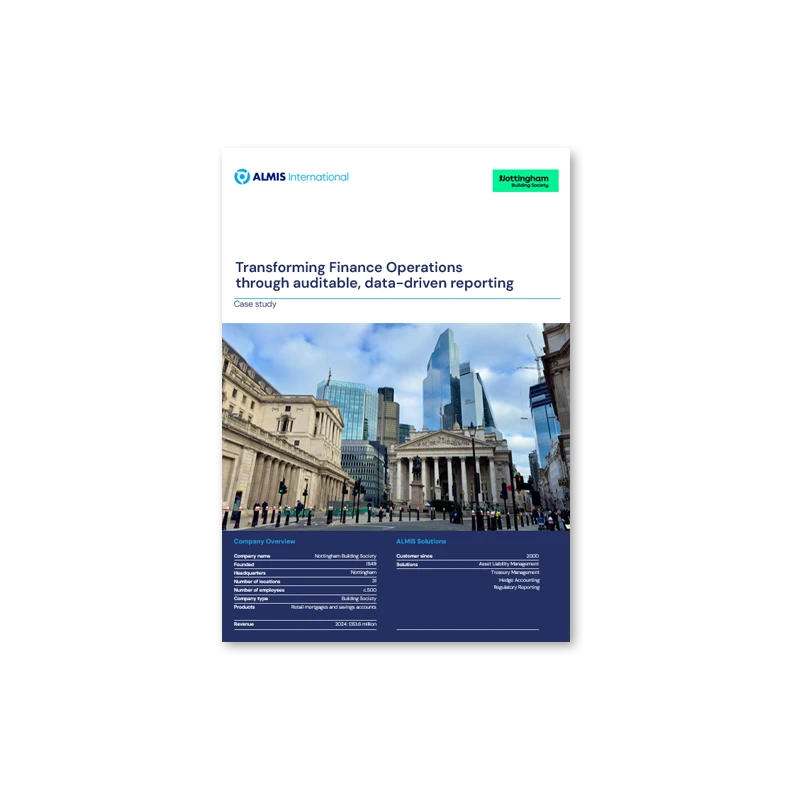


Nottingham Building Society
Nottingham Building Society (‘NBS’), the UK’s ninth largest, with £5bn in assets.
The Situation
NBS has been a valued ALMIS® client since 2000, relying on its solutions for both macro and micro Hedge Accounting. With a swap book today exceeding £5 billion in notional value, ALMIS® is deeply integrated into the Society’s financial reporting infrastructure, supporting both prospective and retrospective hedge assessments in line with IAS 39 and IFRS 9.
Facing the complex demands of Basel 3.1, particularly around credit risk, NBS made a strategic decision to act early, despite the regulation’s implementation being delayed until January 2027. By front-loading the necessary technology and process updates, the Society aimed to avoid the risks associated with a reactive approach.
The Solution
NBS developed a detailed business case and gained internal approval. Their goal was clear: take a proactive approach to Basel 3.1 compliance, reduce downstream risk, and safeguard business continuity. With increasing regulatory demands and limited internal IT capacity, the Society prioritised critical infrastructure improvements. This led to a strategic decision to migrate ALMIS® to the cloud and implement a phased upgrade plan, ensuring NBS is both compliant and future-ready.
Migration to ALMIS® Cloud – to reduce dependency on the internal IT team, providing more flexibility, and enabling easier future upgrades.
Upgrade ALMIS® Hedge Accounting and Cornerstone – supporting critical functions in Hedge Accounting, ALM, and Regulatory Reporting.
A core enabler in this journey has been the integrated design of the ALMIS® system. By unifying Regulatory Reporting, Hedge Accounting, and Asset & Liability Management (ALM) within a single platform, the Society benefits from a single source and efficient process.
Transforming Finance Operations through auditable, data-driven reporting

One of the key advantages of ALMIS® is its integrated functionality, bringing together Regulatory Reporting, Hedge Accounting, and ALM within a single system. You’re working from one consistent dataset to deliver across multiple areas, which ensures consistency and enhances accuracy.
In contrast, firms using multiple systems for each function may face duplicated effort, loading and reviewing data three times over. This unified approach not only saves time but also supports greater data integrity and consistency across reporting outputs.

Jonathan James, Finance Director
Nottingham Building Society

